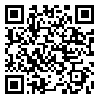Thu, Dec 25, 2025
[Archive]
Volume 14, Issue 4 (December 2018)
IJEEE 2018, 14(4): 353-361 |
Back to browse issues page
Download citation:
BibTeX | RIS | EndNote | Medlars | ProCite | Reference Manager | RefWorks
Send citation to:



BibTeX | RIS | EndNote | Medlars | ProCite | Reference Manager | RefWorks
Send citation to:
Heydari E, Rafiee M, Pichan M. Fuzzy-Genetic Algorithm-Based Direct Power Control Strategy for DFIG. IJEEE 2018; 14 (4) :353-361
URL: http://ijeee.iust.ac.ir/article-1-1185-en.html
URL: http://ijeee.iust.ac.ir/article-1-1185-en.html
Abstract: (5689 Views)
Among a multitude of diverse control methods proposed for doubly fed induction generator (DFIG) based-wind energy conversion systems, direct power control (DPC) method has demonstrated superior dynamic performance and robustness in presence of disturbances. However, DPC is not a flawless method and shortcomings like necessity for high sampling frequency, high-speed sensors and less noise-affected sampling circuit need to be mitigated by utilizing fuzzy controllers. Parameter setting in a fuzzy controller plays a vital role, especially under non-ideal grid conditions. In this paper, a fuzzy-genetic algorithm-based direct power control (FGA-DPC) method is proposed for DFIG, while, the parameters of the fuzzy controller are optimized by genetic algorithm. The objective of the optimization is to minimize the stator active and reactive power errors to increase the precision of reference tracking. The objectives of the controller are also optimizing active power absorption based on the zone of operation and adjustment of reactive power according to grid requirements. The proposed method improves the overall precision and speed of transient response as well as significantly reducing power oscillations under non-ideal grid conditions. Finally, to demonstrate the effectiveness of the proposed method, extensive simulations are performed in Matlab/Simulink under different conditions.
Type of Study: Research Paper |
Subject:
System Dynamics and Control
Received: 2017/11/01 | Revised: 2018/12/01 | Accepted: 2018/05/24
Received: 2017/11/01 | Revised: 2018/12/01 | Accepted: 2018/05/24
| Rights and permissions | |
 |
This work is licensed under a Creative Commons Attribution-NonCommercial 4.0 International License. |








